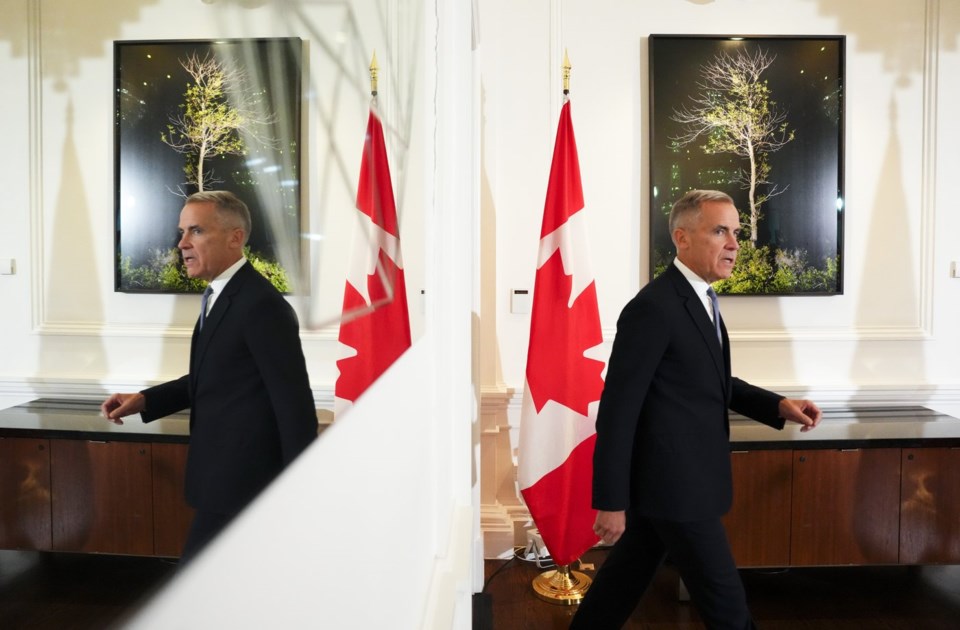Ottawa — Prime Minister Mark Carney says Canada has an opportunity to attract top international tech talent after the United States introduced a hefty $100,000 fee for temporary work visas for specialized employees. The change, announced last month by U.S. President Donald Trump, applies to new H-1B visa applications — a program traditionally used to bring in workers with highly sought-after technical and professional skills.
“These are people with lots of skills that are enterprising, and they’re willing to move to work,” Carney said at a press conference in London. “Not as many of those people are going to get visas to the United States. And these are people with lots of skills that are enterprising, and they’re willing to move to work. It’s an opportunity for Canada, and we’re going to take that into account. And we’ll have a clear offering on that.”
H-1B visas are valid for three years and typically apply to workers with at least a bachelor’s degree in specialized fields. Roughly 60 per cent of these visas issued since 2012 have gone to professionals in computer-related occupations. The original application fee was just $215. The Trump administration argues that foreign workers often accept lower wages, which undercuts American employees. A 2020 Economic Policy Institute report found that 60 per cent of H-1B jobs certified by the U.S. Labor Department paid less than the median wage for those positions.
While the fee hike could make the U.S. less accessible for some international tech workers, experts warn that it may also increase demand for Canadian talent among American companies. Canadians have access to TN visas through the Canada-United States-Mexico Agreement, which allow for easier cross-border hiring. Benjamin Bergen, president of the Council of Canadian Innovators, said American companies could respond to the new fee by looking to Canadian workers and institutions. “Does the shift then go, rather than being from India or from China, that you’re now pulling people from Canadian firms or from Canadian universities? So that’s something we’re heavily monitoring,” he said.
Bergen also noted that some U.S. firms already hire workers in Canadian offices before transferring them south using other visa pathways, a process some in the industry have nicknamed “the Vancouver Ellis Island route.” Angus Lockhart, a senior policy analyst at the Dais public policy think tank, pointed out that U.S. tech jobs pay roughly 46 per cent more on average than their Canadian counterparts, giving many Canadian tech workers a strong financial incentive to move south regardless of visa costs. The H-1B visa also offers a more permanent pathway to U.S. residency than TN visas, making it the preferred choice for many highly skilled Canadians.
Despite these challenges, Canada continues to be an attractive destination for international tech workers. Government figures show that 35 per cent of the country’s computer programmers are foreign born, compared to 26 per cent of the overall workforce. Bergen said that if Canada wants to capitalize on this moment, it must go beyond passively benefitting from U.S. policy changes. “It can’t just be this sort of whack-a-mole, knee-jerk reaction — ‘Oh, the Americans have done something dumb, we inherently benefit from it.’ That’s not how that works,” he said.
He argued that Canada should adopt a whole-of-government approach to support domestic tech companies, including prioritizing procurement from Canadian vendors. He cited Denmark, Israel, Japan, Korea and the U.S. as examples of countries that have successfully strengthened their tech ecosystems through strategic government support.
The Canadian government, meanwhile, is expected to release its updated immigration levels plan by the end of the month. Carney has said that any adjustments to attract talent will take place within the broader context of reducing temporary and permanent immigration. Canada aims to bring the share of non-permanent residents down to 5 per cent of the population by 2027, from 7.1 per cent as of April this year.
While top-tier international talent will likely remain in demand, experts say the steep U.S. visa fee could make employers think twice about hiring foreign workers at lower salary ranges. For highly paid specialists, the $100,000 fee is unlikely to be a deterrent. For those earning in the low six figures, however, it could be a game changer — and possibly a door opener for Canada.

